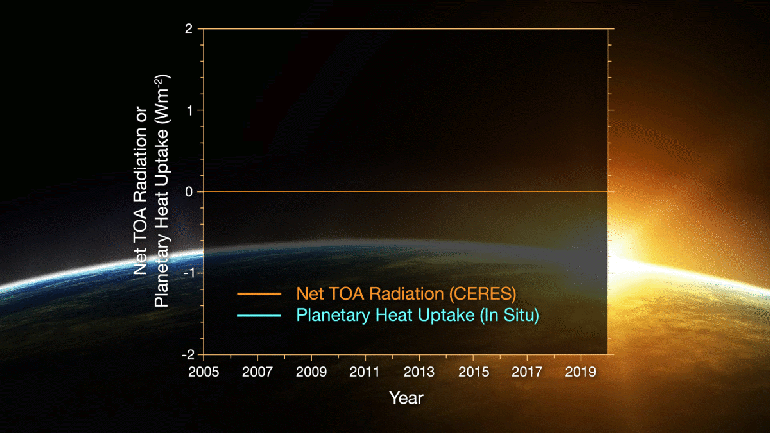A new study found that the planet has been storing in its atmosphere since 2005 large amounts of heat in an unprecedented and alarming way, which led to the doubling of the Earth’s energy imbalance in just 14 years between 2005 and 2019.
Earth’s climate is determined by a delicate balance between how much of the Sun’s radiative energy is absorbed in the atmosphere and at the surface and how much thermal infrared radiation Earth emits to space. A positive energy imbalance means the Earth system is gaining energy, causing the planet to heat up.
The study – published on June 15 in the journal Geophysical Research Letters – was prepared in cooperation between NASA and the US National Oceanic and Atmospheric Administration (NOAA).
The burden is carried by the oceans
The oceans play an essential role in sustaining life on our planet; They absorb about 30% of the carbon dioxide on their surface, and produce about 50% of the oxygen we need.
But because of this increase in the amounts of thermal energy present in the Earth’s atmosphere; The performance of the oceans in absorbing excess heat has increased to an alarming degree; Because the oceans are absorbing large quantities beyond their capacity, and this will not last long.
Scientists at NASA and NOAA compared data from two independent measurements. NASA’s Clouds and the Earth’s Radiant Energy System (CERES) suite of satellite sensors measure how much energy enters and leaves Earth’s system.
The researchers also relied on data provided by a global array of ocean floats, called Argo, enable an accurate estimate of the rate at which the world’s oceans are heating up.

|
| Comparison of overlapping one-year estimates at 6-month intervals of net top-of-the-atmosphere annual energy flux from CERES |
Since approximately 90 % of the excess energy from an energy imbalance ends up in the ocean, the overall trends of incoming and outgoing radiation should broadly agree with changes in ocean heat content.
“The two very independent ways of looking at changes in Earth’s energy imbalance are in really, really good agreement, and they’re both showing this very large trend, which gives us a lot of confidence that what we’re seeing is a real phenomenon and not just an instrumental artifact, ” said Norman Loeb, lead author for the study
The role of the Pacific Decadal Oscillation
The researchers also found that the Pacific Decadal Oscillation (PDO) also played a large role in the global warming of the planet over the past years.
The PDO is a pattern of Pacific climate variability. Its fingerprint includes a massive wedge of water in the eastern Pacific that goes through cool and warm phases. This naturally occurring internal variability in the Earth system can have far-reaching effects on weather and climate.
An intensely warm PDO phase that began around 2014 and continued until 2020 caused a widespread reduction in cloud coverage over the ocean and a corresponding increase in the absorption of solar radiation.
“It’s likely a mix of anthropogenic forcing and internal variability,” said Loeb. “And over this period they’re both causing warming, which leads to a fairly large change in Earth’s energy imbalance. The magnitude of the increase is unprecedented.”
It seems – through the statements of lead researcher Norman Loeb – that predicting what will happen in the coming decades will be very difficult, because all indications suggest that our planet is heading towards an environmental catastrophe of unimaginable size.
Sources:
- https://agupubs.onlinelibrary.wiley.com/doi/10.1029/2021GL093047
- https://www.nasa.gov/feature/langley/joint-nasa-noaa-study-finds-earths-energy-imbalance-has-doubled/

